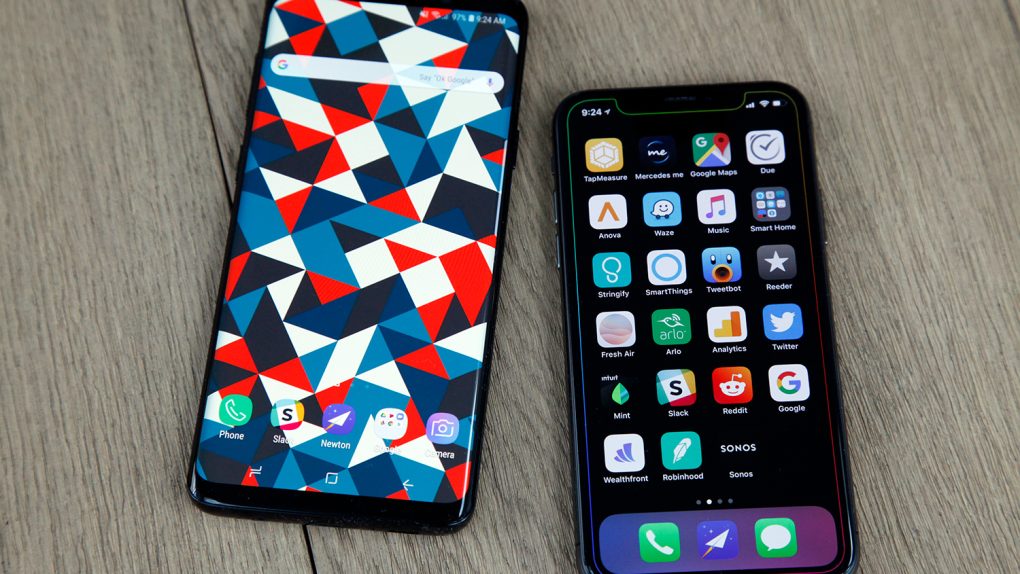Samsung this year tried to replicate Apple’s iPhone sales success. And that’s not a surprise, considering that Samsung has copied the iPhone extensively over the years. In retrospect, it was a brilliant move that paid off handsomely, pushing Samsung to come up with better devices, and, in turn, pushing Apple to make better iPhones.
But Samsung just discovered that Android fanboys aren’t like iPhone fanboys.
It took years for Apple to make bigger iPhones, but when it finally did, it used those designs for several years without making significant changes. On top of that, rival smartphone vendors tried to replicate the iPhone 6 designs, as copying the iPhone is still a thing.
The iPhones that followed it were all almost identical copies. Before the first significant design change arrived — the iPhone X — Apple used the same design over and over. The iPhone 6s, iPhone 7, and iPhone 8 were variations of the iPhone 6, with each new generation bringing over a few new tricks.
In spite of all that, Apple sold boatloads of iPhones every year and even managed to increase the average selling price of the iPhone, which meant buyers were more likely to buy a slightly pimped up bigger iPhone than the basic model. It’s probably why Apple wasn’t afraid to charge $1,000 for the iPhone X.
Samsung tried to go for the same strategy, and it looks like it’s not paying off.
Unlike iPhone buyers, who can’t choose a different iPhone from a different maker, Android fans have a much richer menu. The Galaxy S9 has some great Android alternatives out there — ironically, most of them are iPhone X clones.
The Galaxy S9 series is largely a copy of the Galaxy S8, even though it’s not exactly similar, and one of the few Android flagships that don’t look like an iPhone X. It has a refined design and much better specs. Moreover, the Plus model packs a dual-lens camera and costs more — just like Apple’s Plus phones. In other words, the Galaxy S9 is a Galaxy S8s if you will. And a phone you should consider buying if you’re shopping for high-end Android handsets this year.
But guess what, Samsung hasn’t been able to sell as many Galaxy S9 phones as it hoped and the company’s bottom line reflects that. It turns out that may not be enough for those Android fans who’re looking for something new every year.
Samsung reported four consecutive record quarters, but that streak will be coming to an end when the results for the June 2018 quarter will be finalized.
Samsung posted its earnings guidance for the second quarter of the year, and the results paint a dire picture for Galaxy S9 sales. The company expects to report 14.8 trillion won ($13.2 billion) in profit and 58 trillion won ($51.8 billion) in revenue for the period. That’s an increase of 0.71 trillion won in profits, but a 3 trillion won drop in sales compared to the same time last year, as Samsung missed estimates for the quarter that ended on June 30th.
Moreover, the numbers are significantly worse than the first quarter, when Samsung reported 15.64 trillion won operating profit off 60.56 trillion won sales.
Analysts expect Samsung to sell just 31 million Galaxy S9 units in 2018, which is well below expectations. The Galaxy S7 is likely to remain the company’s best-selling phone, with 50 million units sold in the first year.
It doesn’t help Samsung that the entire smartphone business is in a slump right now either. Apple’s iPhone X isn’t selling as great as Apple expected, but it’s still making a boatload of cash for Apple. The iPhone 8 series is also selling very well, even if it looks a lot like the previous flagships. That’s because many iPhone owners will continue to buy iPhone even if it looks exactly like the phone that launched two or three years ago.
The iPhone X’s weaker performance also affects Samsung’s bottom line, as its Display division is the sole provider of those expensive iPhone X OLED panels.







